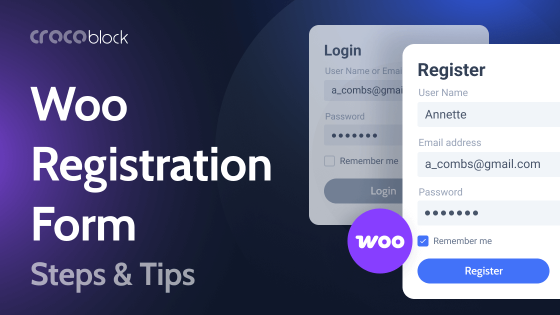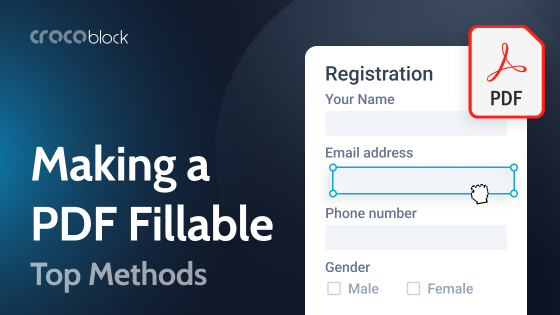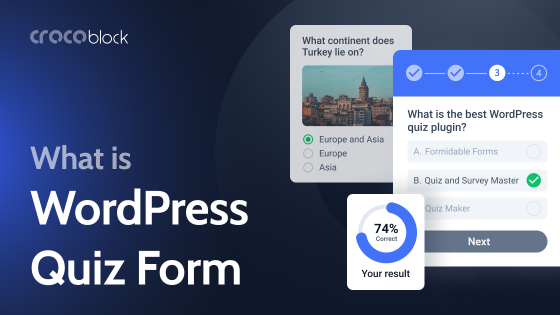If you have even a passing interest in web design, you’ve probably come across UX and UI. In many articles, they appear together and are often used interchangeably.
Let’s get it straight out there for those not familiar with the abbreviations:
- UX is user experience.
- UI is user interface.
If you’re serious about web design, you need to know some key differences between the two.
UX and UI are both vital to building a website. They work together to provide users with a fantastic web experience, but UX and UI specialists deal with different webpage elements.
Let’s dive in to explore the differences between UX and UI.
Table of Contents
- What Is User Experience (UX) Design?
- What Is User Interface (UI) Design?
- What Do UX Designers Do?
- What Do UI Designers Do?
- FAQs
- How Do UX and UI Fit Together?
What Is User Experience (UX) Design?
The field of UX design specializes in the experience a user has with a website. Therefore, a UX designer concentrates on how well a website works for the end user.
They try to answer the following questions:
- What do users feel when they are navigating the website?
- Does the web experience flow for the user?
- Can the user easily accomplish what they come to the website to do?
How can we use the tools available to design a website that works for the audience? Sometimes web design can seem overly technical. One of the principles of UX is to remedy this and place the human user front and center.
UX designers make informed decisions based on testing and research to find out what users want and what their pain points are before designing a solution to overcome their challenges.
Good UX will make the user’s journey seamless, frictionless, and efficient.
What Is User Interface (UI) Design?
UI designers work on the site’s visual elements to build a pleasing aesthetic for the user.
The following questions influence their work:
- Do users find the way the website looks attractive?
- Are the interactive elements of the site intuitive for the user?
- Generally, does the design feel natural and evoke positivity?
The task of a UI designer is to make even the most minor elements of a website aesthetically pleasing and meaningful. UI design includes deciding on color schemes, font combinations, graphics, forms, menus, hover-triggered animations, buttons, and more.
UI designers rely on design research and trends, industry analysis, and general web design principles to build an interface and interactions that people feel confident and at ease with.
You now have a general overview of what UX and UI designers do. It should be evident they go hand in hand to create a digital product that is intuitive and aesthetically pleasing to the user.
But let’s drill down into the specific tasks of each job role to fully understand the difference between UI and UX.
What Do UX Designers Do?
UX design is the process of applying web design principles to create user-friendly web experiences while also helping the client achieve their business goals.
I remind you that, ultimately, a website is often the online face of a business. As such, UX designers must build a website that not only attracts visitors but also converts them.
It’s worth remembering that while the main priority is usually offering a user-first web experience, the whole process is underpinned by the need to positively impact the business’ bottom line.
I think it’s therefore better to think of UX designers as primary researchers. The technical aspect of building the website only comes after a whole load of research and testing.
Research
UX designers will gather information through various methods to create working blueprints for how the website should look and feel.
One aspect of the research is competitor analysis, particularly helpful if you’re developing a website for a new business with little to no client data at your disposal.
Another valuable metric during the research stage is industry statistics. This information is used by UX designers to discover more about the target market, spot market trends, and more.
Through field research, designers can also gain first-hand knowledge of the target users, their problems, and their motivations through user surveys and interviews.
UX designers then collate all their research and data and feed it into a user persona.
A user persona is essentially a fictional representation of the target user. It will outline their demographics, needs, values, pain points, and other information.
The idea is by building a clearly defined picture of the target user, UX designers can then better satisfy the user through their UX design efforts.
Armed with all this information, UX designers then think about the information architecture of the site.
Information Architecture
The information architecture process is where UX designers set out different ideas on the workflows, structure, and content organization of the website based on all the research they’ve carried out.
The next step is to create simplistic wireframes that allow UX designers to visualize user flows and layouts without getting bogged down in the details. At this stage, UX designers are just experimenting with layout and site structure with placeholders for where copy and images will go later.
Testing before going live
UX designers keep testing through an iterative process to see if they’ve built a website that pleases users. They create various mockups and collect feedback from several sources.
If they’ve done the intensive process well, the end product will be a website that appeals to their target audience and performs well for the client. Even then, they’ll keep measuring website analytics to identify areas for improvement.
What Do UI Designers Do?
An easily navigable site is essential to attract users, but it might amount to nothing if the site is a negative experience through its ugliness.
We know that attractive interfaces work better to convert users. This is a web design principle called the Aesthetic-Usability Effect.
Therefore, consider UI designers putting the finishing and aesthetic touches to the experience that the UX designers have created. UI complements UX design by solidifying a positive first impression and ensuring a visually pleasing experience throughout the site.
Their work comes after the UX design but is no less important.
Goals of UI Design
The goals of UI designers are as follows:
- To create interfaces that reflect the personality and voice of the brand.
- To create interfaces that evoke a positive response from the user.
- To create interfaces that help conversions.
They must design everything that the user sees on the webpage to create a holistic experience where everything ties in to keep the user engaged.
Research
A UI designer will follow a similar research process to a UX designer.
A UI designer will keep up to date with the latest web design trends and what current web standards dictate for things like responsive design, accessibility, and coding standards.
However, they’ll need to conduct specific competitor research and design research for the client’s niche.
A lot of UI research can be about finding the balance between an original, novel design without compromising user expectations of what the website should look like. Generally speaking, user psychology plays a significant role in the UI decision-making process.
Brand identity
UI designers are in charge of creating a brand’s online visual identity. They need to understand brand personality and values to inform visual choices related to:
- typography;
- color scheme;
- image use;
- animations;
- iconography.
Style Guide
Once decisions have been made regarding the online visual identity of the brand, a UI designer will set out their decisions in a brand style guide that explains exactly how to incorporate the brand into the UI design of the site.
It can be shared with all contributors to ensure everybody sticks to one consistent message for how to apply the visual elements.
This consistency is key to providing a pleasant visual experience for the user.
Mockups
The UI designer will combine all of their planning and research with the foundation the UX designer established to create mockups.
The website mockups will be detailed, full-color representations of every web page.
As a web design team, you can then choose which mockups work best based on various internal and external A/B testing methods.
And just like UX designers, the testing isn’t done once the website goes live. Realistically, the website should be seen as an ever-evolving entity. UI designers will constantly identify opportunities to improve the UI design for better website performance as audience preferences and technological capabilities change.
FAQs
Most UX designers are not required to understand coding as that is the web developer’s responsibility. However, it is beneficial to have a working understanding of coding principles.
UX design is a challenging subject to learn from scratch. That’s because the field’s area of potential expertise is vast. You can become a UX designer in months, but it takes years to truly master the ever-evolving craft.
UI designers will use various tools for work. They’ll use a content management system like WordPress, brand guideline development tools like Frontify, and design software like Sketch, among many other potential tools.
UX designers need to use various tools to carry out research and design wireframes. They’ll do competitor research through tools like SEMrush and SimilarWeb, and they’ll use programs like Figma to create website prototypes.
How Do UX and UI Fit Together?
While their job responsibilities may be different, it should be evident that UX and UI go hand in hand. Effective web design relies on collaboration and communication between UI and UX designers to ensure a coherent finished product.
The research stage should also be a shared experience as the whole team benefits from that information gathering.
In conclusion, while a UX designer and a UI designer work with different tools to complete different tasks, their work has to align – along with a web developer – to create an effective, user-friendly website that converts. Without a clear structure for collaboration, things can get messy.



